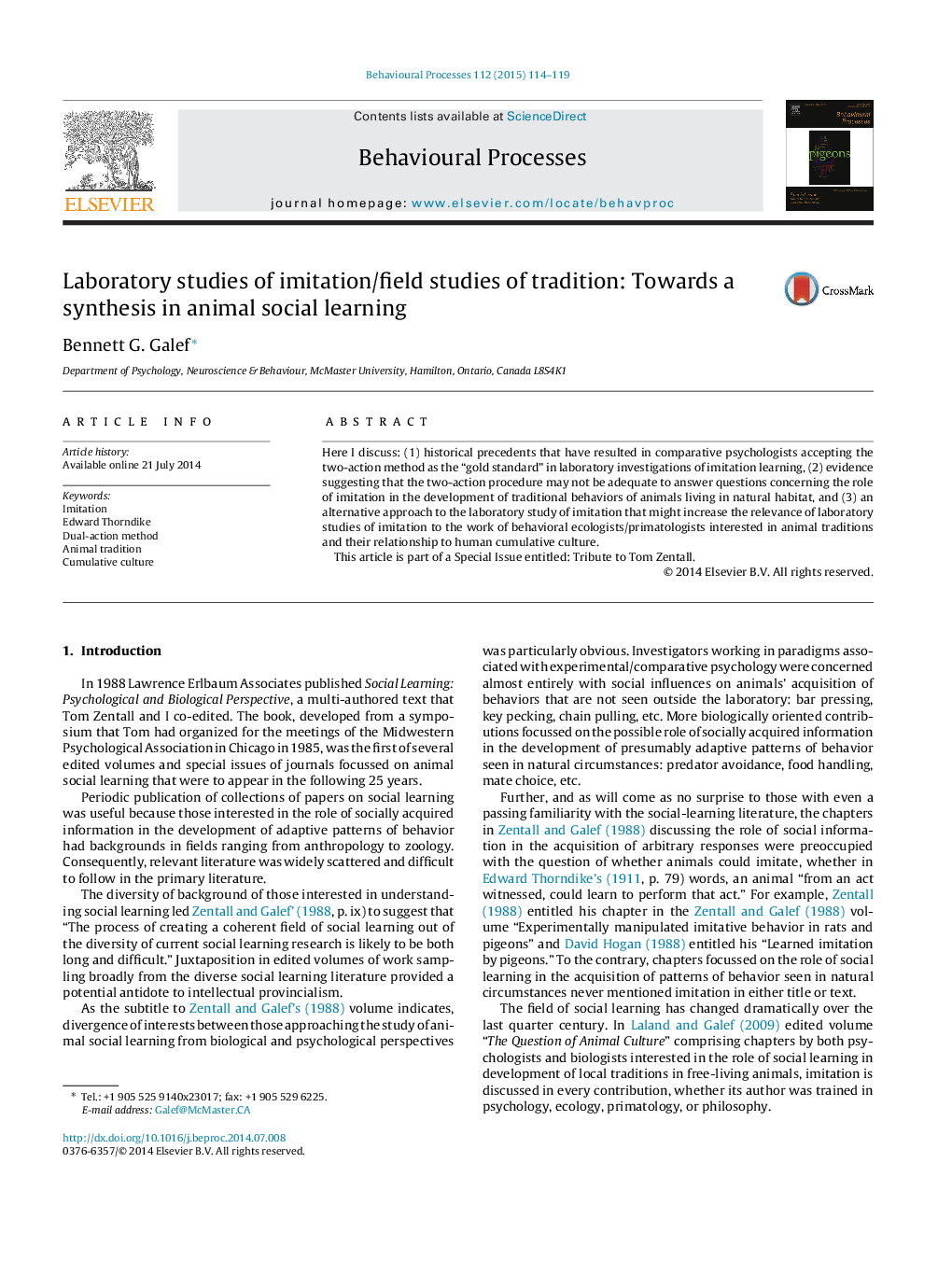| Article ID | Journal | Published Year | Pages | File Type |
|---|---|---|---|---|
| 2426641 | Behavioural Processes | 2015 | 6 Pages |
•How the two-action method became the gold standard for determining whether an animal can “from an act witnessed, learn to perform that act” (Thorndike, 1911).•Problems with the two-action method in understanding the development of traditional behaviors in free-living animals.•Bird-song learning may provide a more appropriate model than classic Thorndikian imitation for understanding the role of social learning in the development of regional traditions in animals.
Here I discuss: (1) historical precedents that have resulted in comparative psychologists accepting the two-action method as the “gold standard” in laboratory investigations of imitation learning, (2) evidence suggesting that the two-action procedure may not be adequate to answer questions concerning the role of imitation in the development of traditional behaviors of animals living in natural habitat, and (3) an alternative approach to the laboratory study of imitation that might increase the relevance of laboratory studies of imitation to the work of behavioral ecologists/primatologists interested in animal traditions and their relationship to human cumulative culture.This article is part of a Special Issue entitled: Tribute to Tom Zentall.
